History of Probe Lens
The concept of probe lenses, as we know them today, began with a need for close-ups in tight spaces that traditional lenses couldn’t achieve. Imagine you’re a special effects director filming a 1:10 scale city model for a commercial. You want the camera to smoothly transition from outside a window, across the room, under a sofa, and past a water basin. Traditional lenses would struggle to navigate such a confined space. This is where probe lenses come in. Their long, narrow design allows for precise movements through tight spaces, capturing every detail without losing focus. This ability to film in such challenging environments became a cornerstone of modern cinematography, setting the stage for the innovations that followed.
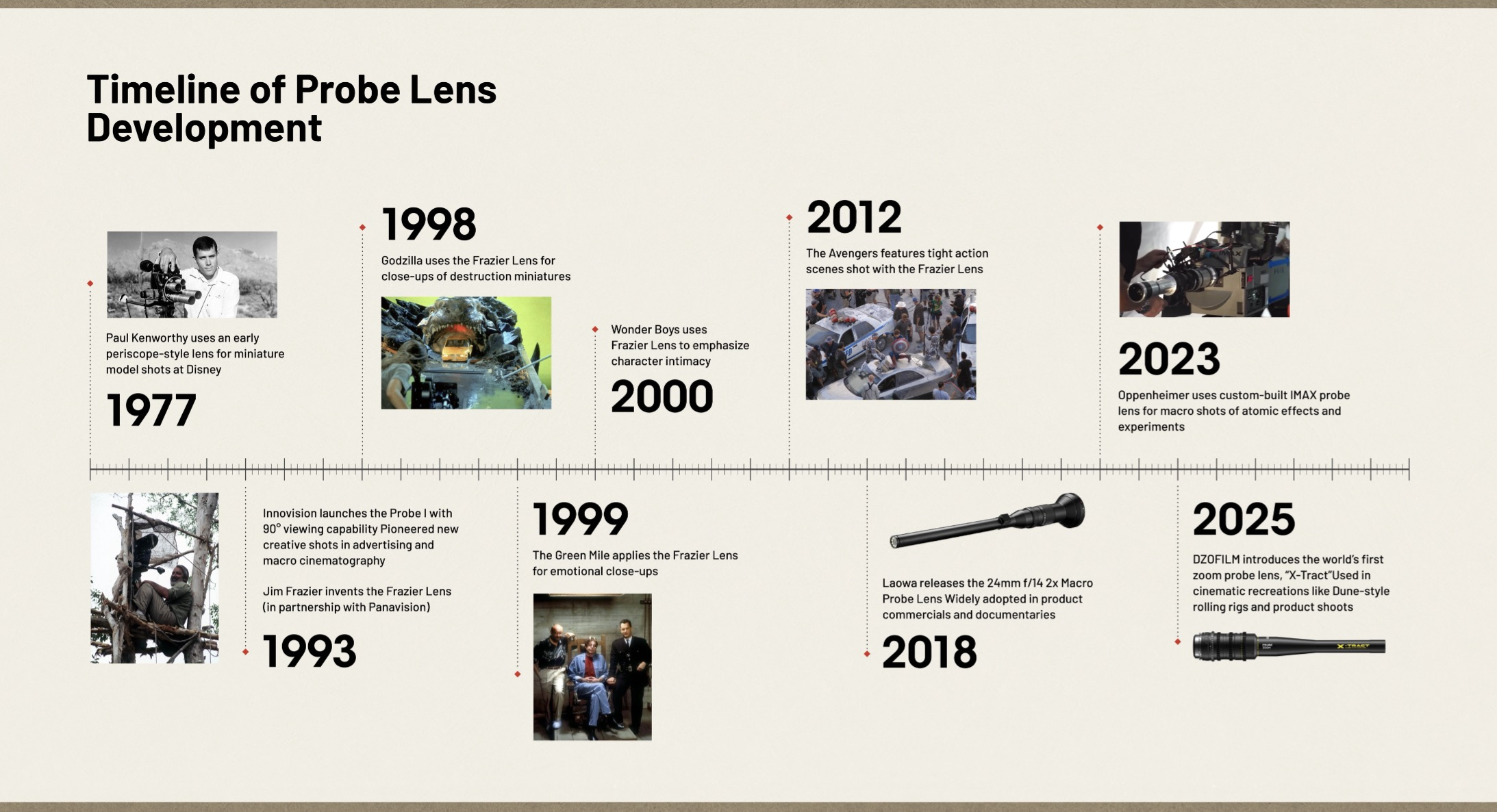
The Early Beginnings of Probe Lenses
Probe lenses, as we know them today, have their roots in the early work of Paul Kenworthy, a Walt Disney Legend. In 1977, Kenworthy was the first to use the periscope lens in the film industry, allowing cameras to get incredibly close to miniature models and small objects. This innovation, which could capture detailed shots from tight spaces and unusual angles, laid the foundation for modern probe lenses.
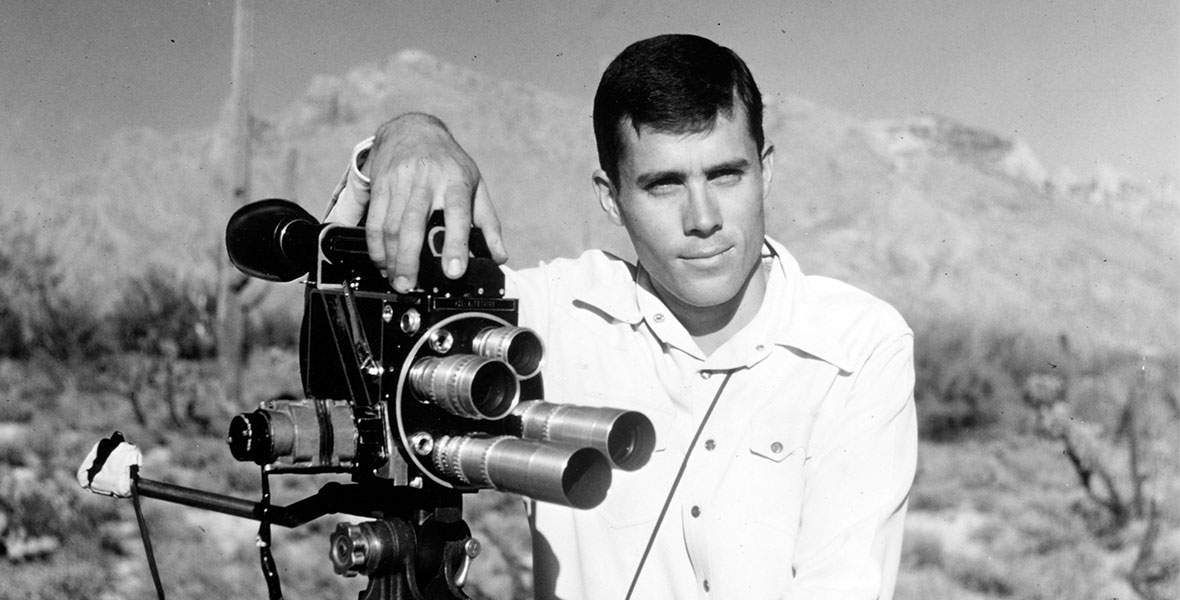
Australian cinematographer Jim Frazier revolutionized macro cinematography with his patented Frazier Lens system in 1993. Licensed by Panavision, this innovation allowed filmmakers to capture ultra-detailed, close-up shots in extremely confined spaces. Its impact was proven in major Hollywood films like Godzilla, The Green Mile, and The Avengers, where it was used to create some of cinema's most iconic, detailed shots. This innovation revolutionized the way filmmakers approached close-up shots and macro cinematography, making it possible to film in tight, intricate spaces with great detail.
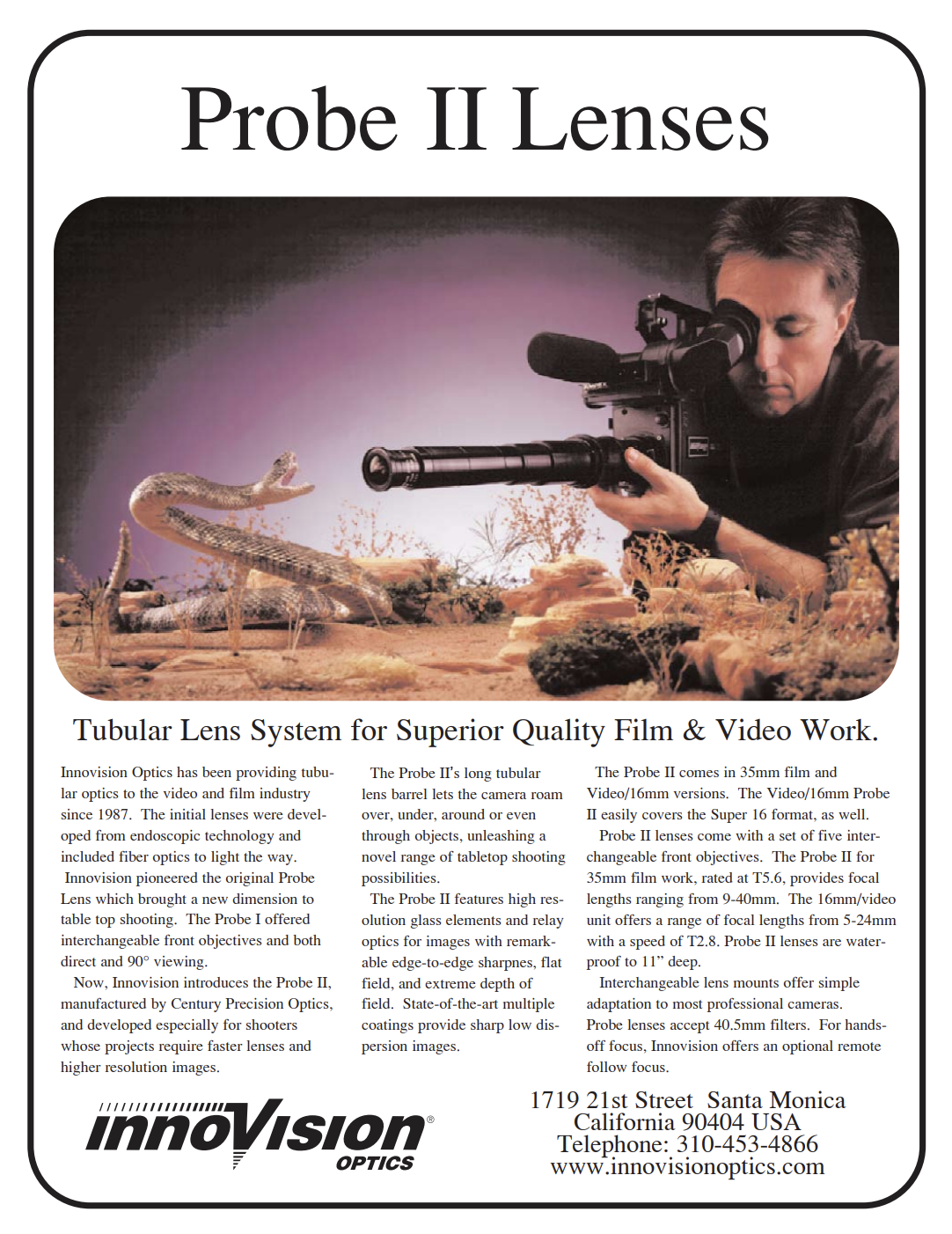
In the same year, Innovision launched the Probe I, which offered interchangeable objectives and 90° viewing. This, along with the later Probe II with T2.8, allowed cameras to maneuver through tight spaces and film shots once thought impossible, pushing the boundaries of filmmaking.
Representative Applications in Film and Television Productions and the New Era of Probe Lens
In the world of cinematography, the development of probe lenses has opened up exciting new possibilities for filmmakers, enabling them to capture extreme close-ups and intricate details that would otherwise be impossible. These lenses have become a key tool for capturing the finest details in tight spaces, making them invaluable across various genres in film, television, and even commercials.
Jim Frazier's significant contribution to probe lens technology was the development of the Frazier Lens in collaboration with Panavision. Designed to capture highly detailed close-ups in confined spaces, it was first used to great effect in "Godzilla" (1998), where it helped capture dramatic close-ups of miniature models and destruction scenes. The lens’s precision was crucial for achieving a high degree of realism in miniature shots, making dramatic visual effects scenes far more believable.
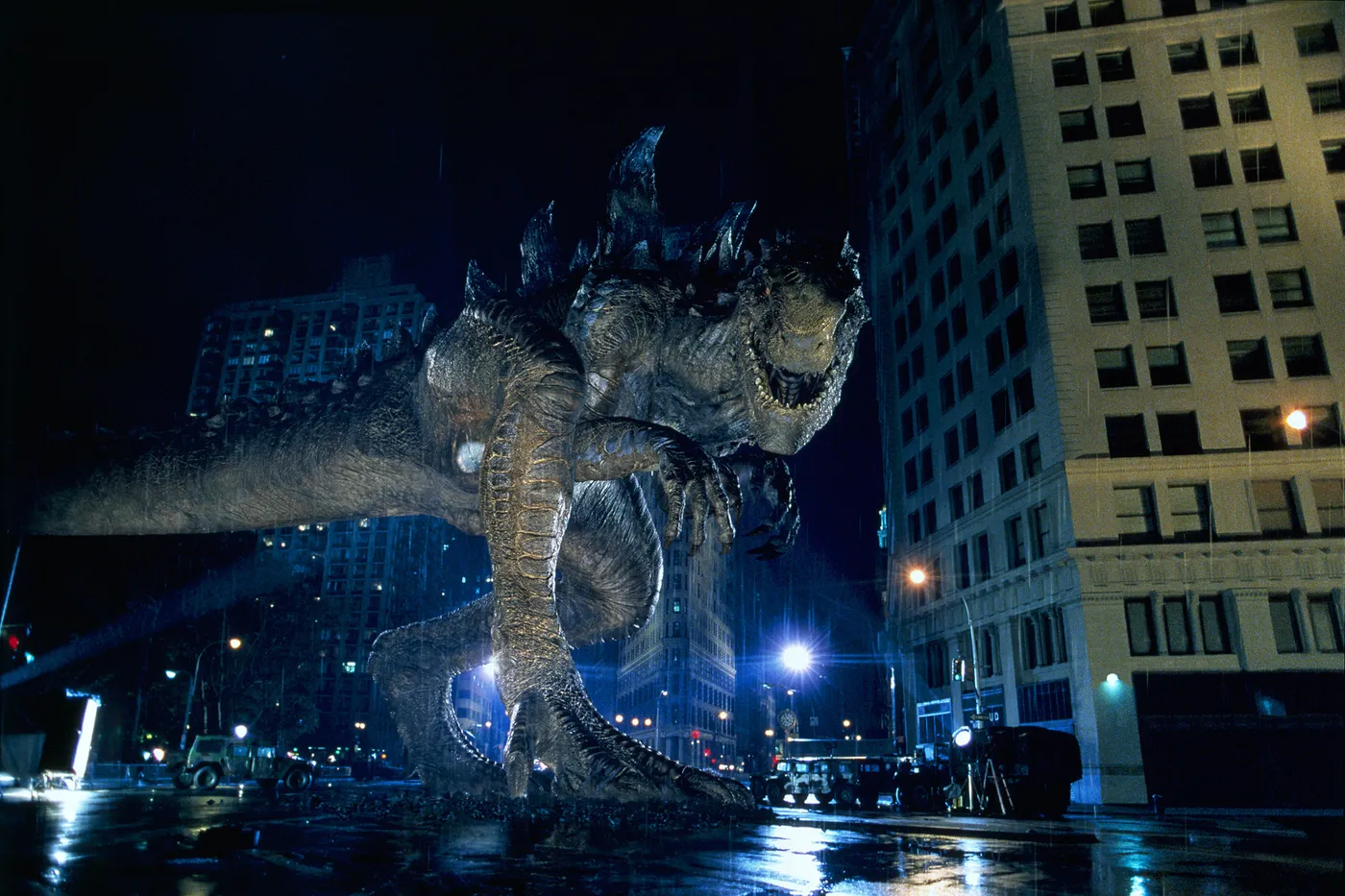
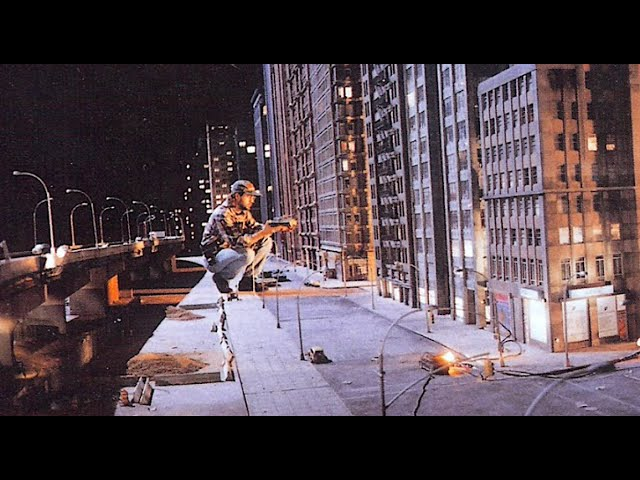
Following the success of “Godzilla”, the Frazier Lens continued to play a significant role in other films, including “The Green Mile” (1999) and “Wonder Boys” (2000). In both of these films, probe lenses were used to capture intimate, emotionally charged close-ups of the characters, providing a level of depth that traditional lenses could not. The Frazier Lens proved invaluable in capturing the fine details that brought these stories to life, making every shot feel deeply personal and affecting.
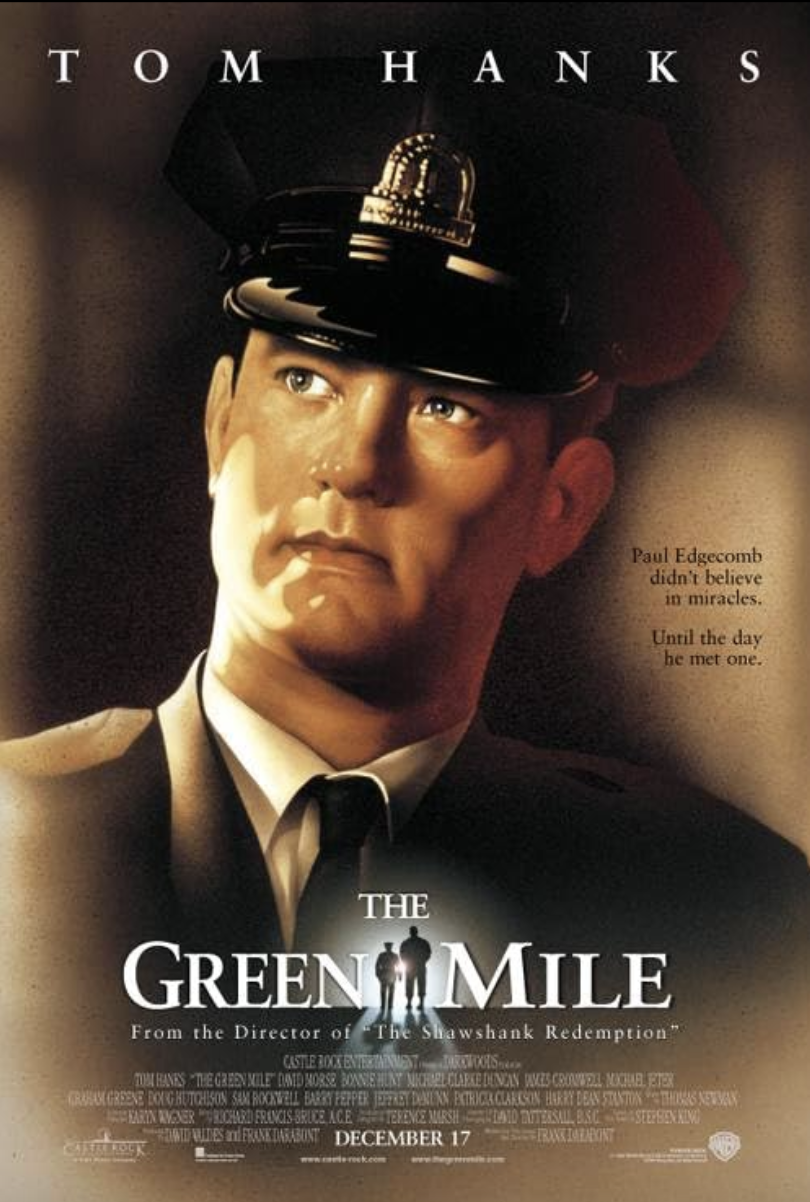
By The poster art can or could be obtained from Warner Bros.(U.S. Theatrical & worldwide DVD)UIP / Universal(International)., Fair use, https://en.wikipedia.org/w/index.php?curid=1965960
Later, in “The Avengers” (2012), probe lenses again made their mark, this time in the realm of high-energy action sequences. The lens system was used to film tightly framed action shots and specific close-ups of props and characters, ensuring that even in the midst of fast-paced scenes, the clarity and sharpness of the image were never compromised. The ability to maintain high resolution in the midst of complex, dynamic action was a key feature that set the Frazier Lensapart from traditional lenses. (Maher, 2019)
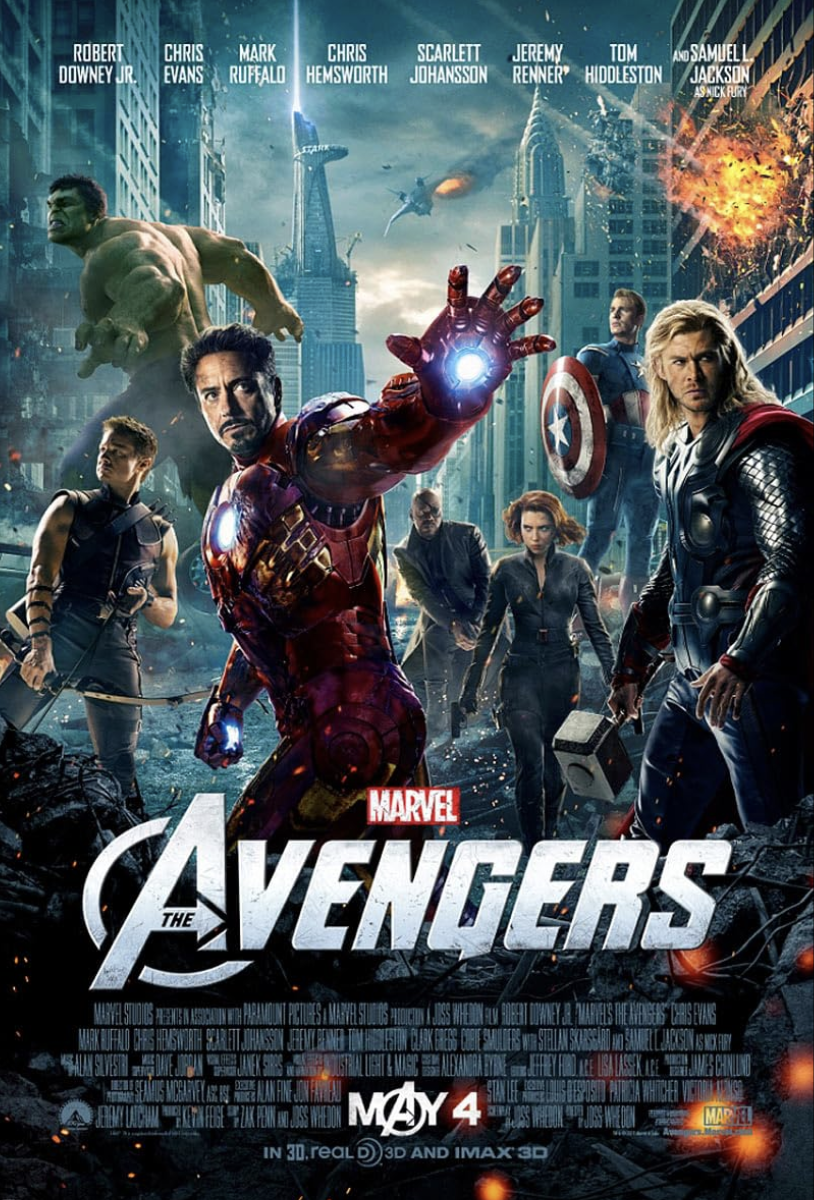
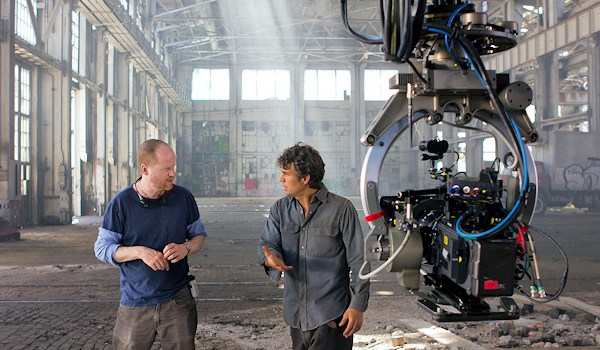
By ShotOnWhat?,https://onset.shotonwhat.com/gallery/behind-the-scenes-the-avengers/?tag=1066
In recent years, probe lenses have played a crucial role in elevating the visual storytelling in films, especially in capturing intricate close-ups and extreme macro shots that are difficult to achieve with traditional lenses. A prime example of this innovation can be found in Christopher Nolan’s Oppenheimer (2023). In a groundbreaking approach to filmmaking, Nolan and cinematographer Hoyte van Hoytema collaborated with Panavision to develop a specialized probe lens with T1.4 for shooting some of the film’s most intense and visually complex scenes.
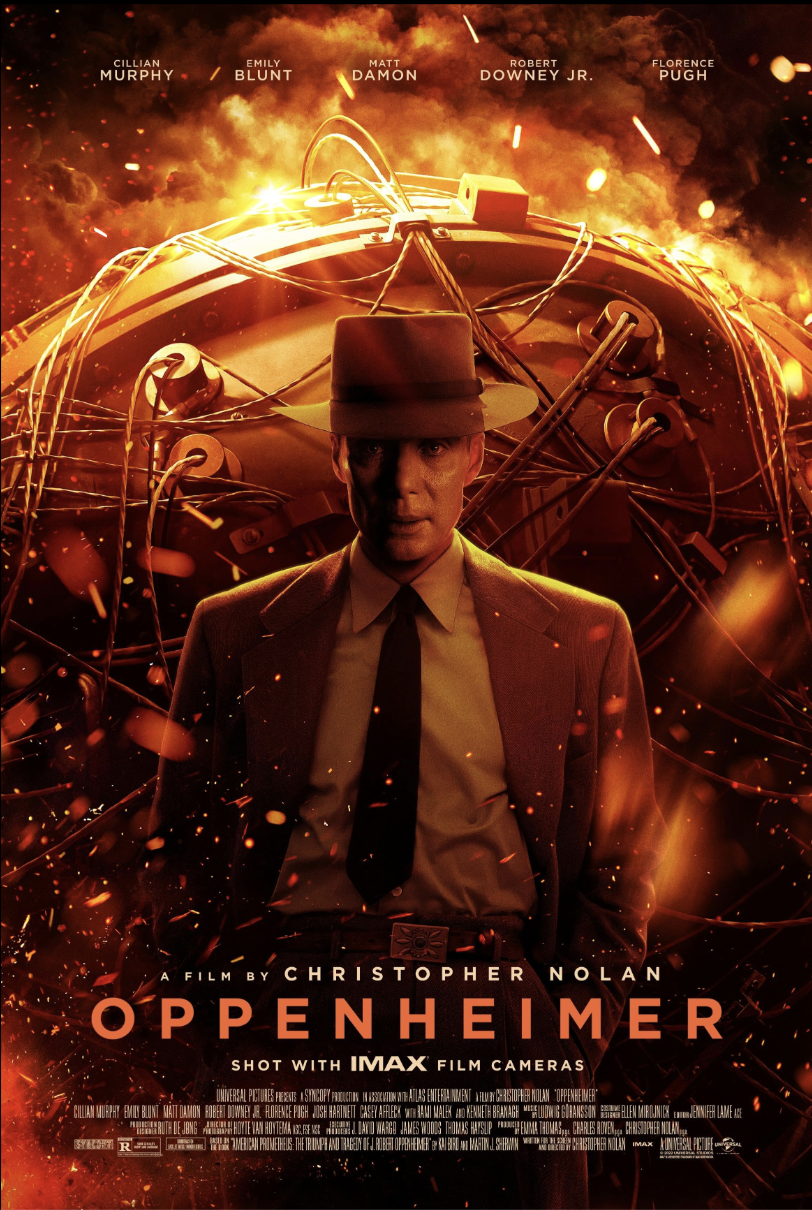
By Universal Pictures Publicity, Fair use, https://en.wikipedia.org/w/index.php?curid=71354716
Faced with the challenge of filming scientifically accurate, extreme close-ups of atomic explosions and experiments, cinematographer Hoyte van Hoytema and Panavision's Dan Sasaki designed a custom, two-foot-long probe lens for IMAX cameras. This innovative lens provided a greater depth of field, allowing the team to capture intricate miniature models and delicate setups in confined spaces without losing focus or detail. This lens was essential for filming in water tanks or glass enclosures, bringing an unprecedented level of realism and immersion to the film. Providing audiences with a more visceral, up-close experience of the events unfolding on screen.
Probe Lenses in the Digital Era
Entering the digital era, the design of probe lenses underwent a revolutionary transformation, driven by the dual demands of miniaturization and higher resolution. The rise of high-definition, 4K, and now 8K digital cinema cameras exposed the optical limitations of older probe systems, which were not designed for the extreme sharpness and pixel-level scrutiny of modern sensors. This created a market gap for a new generation of probes that could deliver critically sharp, aberration-free imagery even at extremely close distances.
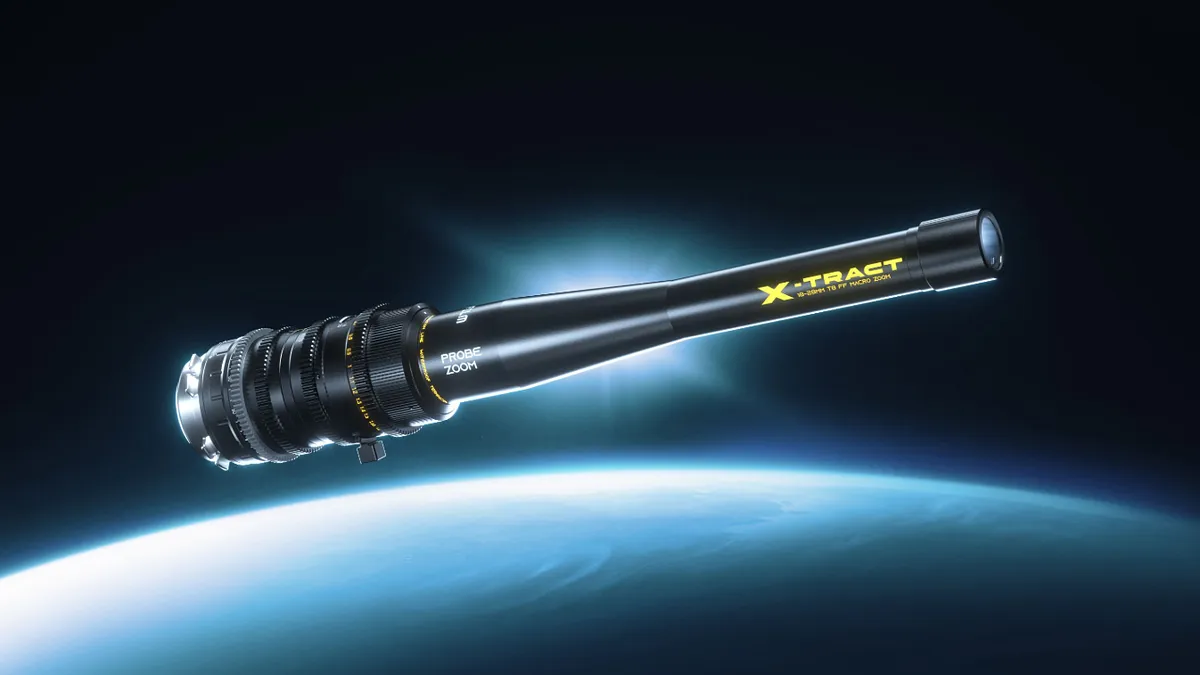
This evolution was accelerated by the parallel revolution in camera body size. The advent of powerful, compact digital cinema cameras meant that large, heavy lens systems were no longer a practical fit. Filmmakers needed probes that were not only optically superior but also smaller, lighter, and more agile to match the form factor of these new cameras. This shift in hardware fundamentally changed the demand from exclusively large studio productions to a new market of indie filmmakers, commercial DPs, and documentary shooters. The core of this revolution lies in the move away from the "ultra-specialized, custom-built tool." Legacy systems like the Frazier lens were engineering marvels but were essentially hand-built, mechanical prototypes. Their exorbitant rental cost and the necessity for a specialized technician to operate them placed them firmly out of reach for all but the biggest-budget productions.
In 2018, Laowa (Venus Optics), a Chinese lens manufacturer, made waves in the industry by launching the 24mm f/14 2× Probe Macro Lens. This lens quickly gained attention for its remarkable capabilities, offering a 2x magnification ratio, ultra-close focusing, and a unique long, slim barrel design.
In 2025, DZOFILM revolutionized the probe lens market with the launch of the world’s first probe zoom lens series, the 'X-Tract'. Previously, probe lenses had fixed focal lengths, limiting flexibility when shooting dynamic scenes or adjusting framing. The addition of zoom functionality combines the precision of probe lenses with the versatility of zoom lenses, offering more creative freedom. Most importantly, it’s more accessible and easier to use for all filmmakers.
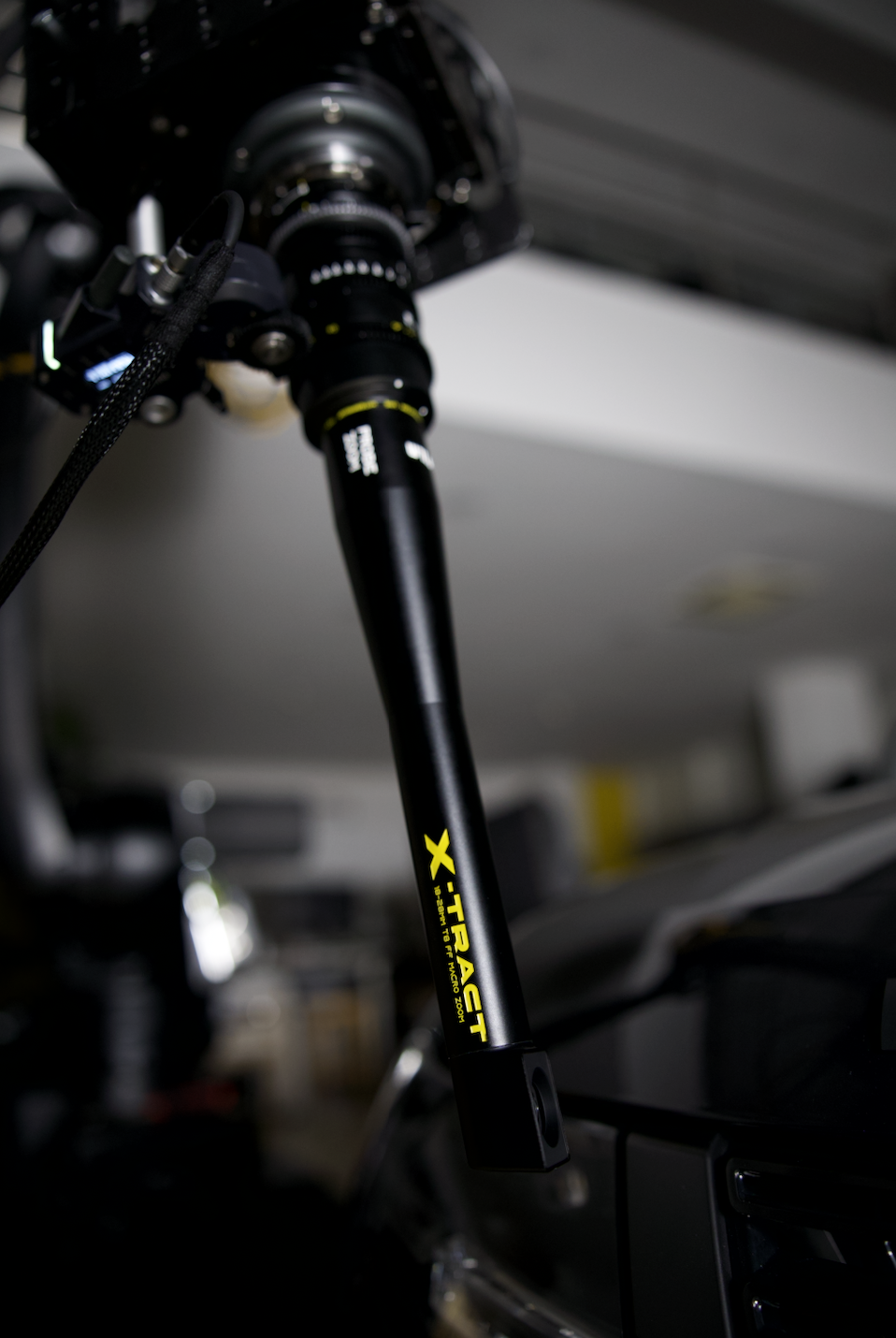
This innovation brings several advantages, such as enabling smooth focal length transitions like Hitchcock’s famous dolly zoom technique, but in close-ups. It also opens up new possibilities for the “rolling rig,” allowing dynamic shots from low angles or confined spaces. With the ability to shoot at 0°, 90°, and 360° angles, this probe zoom lens offers unparalleled flexibility, enhancing visual storytelling with greater ease and creativity. In the future, these lenses may also allow for interchangeable front and rear groups, giving creators greater flexibility in their budget and creative combinations. Probe lenses like the X-Tract feature a modular system, allowing quick inter-lens mount swaps for seamless transformation between 0°, 90°, and 360° angles. All of these integrations enable rapid on-set deployment, drastically reducing setup times and streamlining production workflow with a small production team.
Contribution of Modern Probe Lens on Cinematography
Probe lenses have also found a significant role in the world of advertising, particularly in high-end commercials for luxury goods, electronics, and automobiles. Their ability to capture intricate textures and fine details has made them indispensable for showcasing products in their best light. From the gleam of a luxury watch to the smooth finish of a high-end car, probe lenses allow advertisers to highlight the craftsmanship and unique features of products, bringing every detail into sharp focus.

This technical efficiency empowers cinematographers to capture imagery that was previously only possible with large crews and extensive equipment. The true potential of these lenses is unlocked when paired with motion control robotics. In product commercial filmmaking, this combination is revolutionary. The robotic arm executes pre-programmed, mathematically perfect camera moves—complex reveals, seamless tracking shots through constrained spaces, and dynamic orbits around a product. Meanwhile, the probe lens’s unique optical characteristics—its extreme close-focusing capabilities and ability to navigate tight environments—provide the creative flexibility to capture these moves from previously impossible perspectives. This allows cinematographers and motion-control programmers to collaborate closely, using technology to precisely translate imaginative concepts into astonishing visual wonders with scientific repeatability and accuracy.
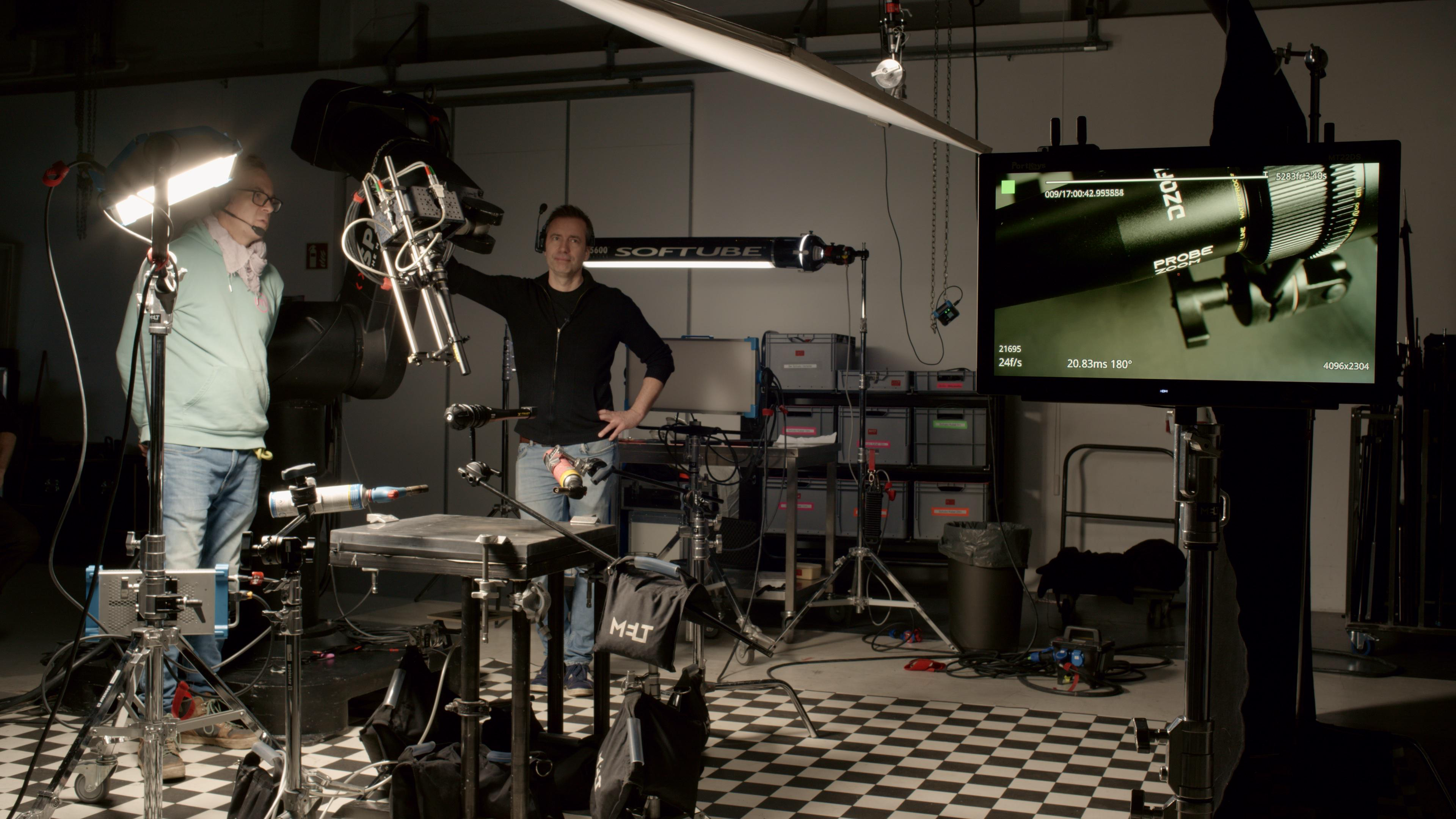
Media Division with DZOFILM X-Tract
These developments continue to push the boundaries of what is possible with probe lenses, further cementing their place as essential tools for contemporary filmmaking. As technology continues to evolve, we can expect even more exciting innovations in the field of macro cinematography in the years to come.
Probe lenses have significantly impacted both cinema and advertising, providing filmmakers with a tool that captures extreme close-ups and intricate details in tight spaces without losing sharpness or depth of field. This allows for a more intimate and complex storytelling approach, revealing subtle emotions, textures, and movements that might otherwise be missed.
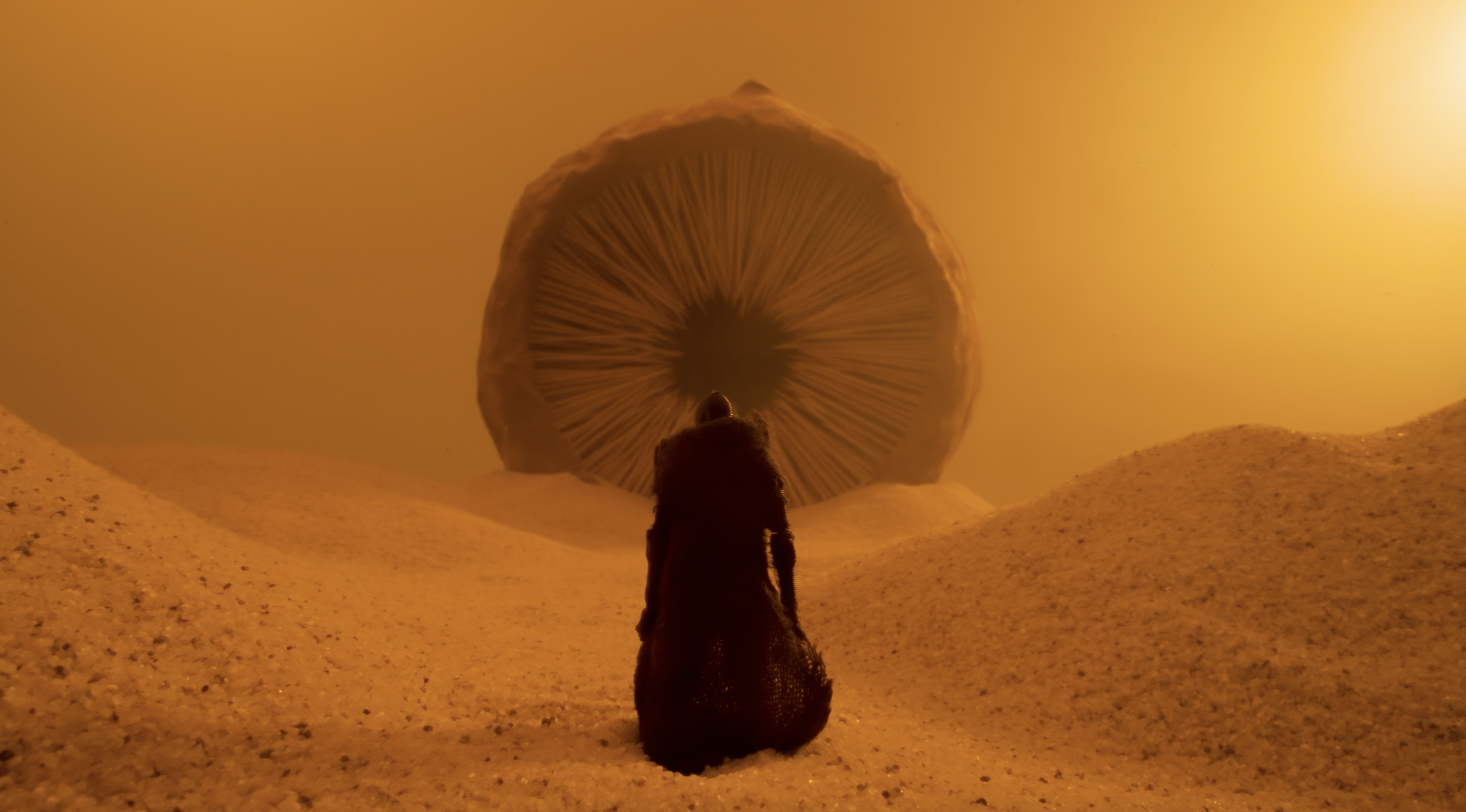
Creative Video Producer Austen Pual Recreates Dune Scene with DZOFILM Probe Zoom
In visual storytelling, close-ups reveal emotional depth or emphasize objects’ significance, and probe lenses amplify this by capturing even the smallest details, creating a deeper connection with the audience. Their narrow, cylindrical design allows for creative compositions, where focus shifts rapidly between small details, adding richness to scenes.
In advertising, probe lenses elevate product shots by highlighting textures, craftsmanship, and design, enhancing the brand’s message and quality. By showcasing every nuance, these lenses make objects feel more intimate and carefully crafted, reinforcing the narrative of excellence.
The development of the probe zoom lens, which combines the precision of probe lenses with zoom functionality, offers even more flexibility. It allows filmmakers to smoothly transition between focal lengths while maintaining detail, making it easier to create dynamic shots. As technology evolves, probe lenses will continue to shape the visual language of both film and advertising, bringing richness and immersion to storytelling.
The Role and Future Trend of Probe Lenses in Modern Filmmaking Industry
Probe lenses have become essential in modern filmmaking, allowing cinematographers to capture intricate details and extreme close-ups in tight spaces. These lenses have enabled filmmakers to push the boundaries of visual storytelling, offering new perspectives and enhancing immersion in both blockbuster films and independent productions. Their ability to maintain focus and depth of field at close distances has made them indispensable for achieving highly detailed visuals that traditional lenses cannot replicate.
Imagine you’re a special effects director for a commercial, and you need to film a 1:10 scale city model. You want the camera to seamlessly move through the window, across the room, under the sofa, and past a water basin. Traditional lenses simply can’t navigate such a confined space. This is where a probe lens comes in. Its long, narrow design allows for smooth, precise transitions through tight spaces, capturing the shot without losing focus or detail.
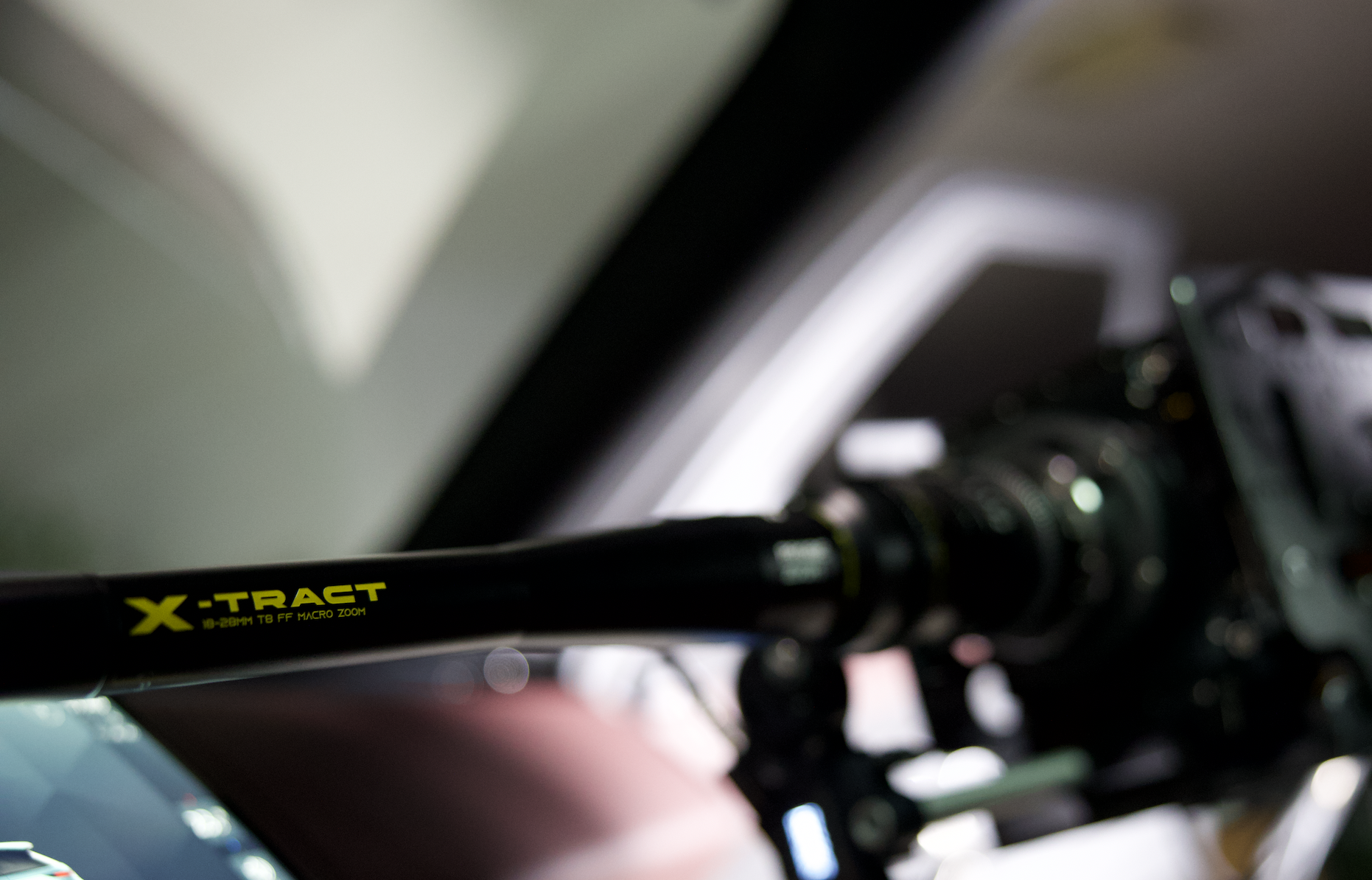
Looking ahead, the continued development of probe lenses, including innovations like zoom functionality, will further expand creative possibilities. These lenses will integrate seamlessly with emerging technologies like virtual production and augmented reality, enabling filmmakers to create dynamic shots in unconventional spaces. As the filmmaking landscape evolves, probe lenses will remain a key tool in shaping visual storytelling, offering endless opportunities for dynamic, immersive content creation.
